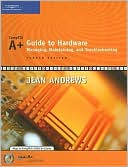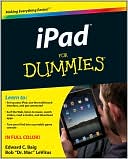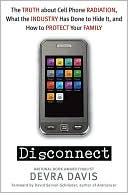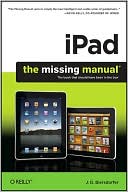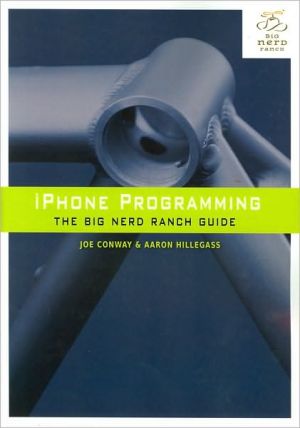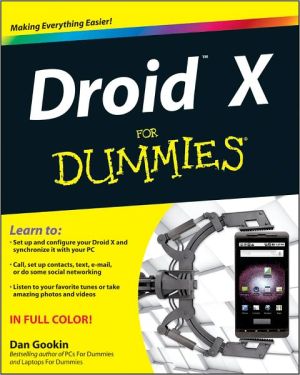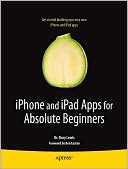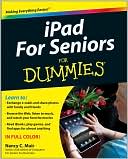A+ Guide to Hardware: Managing, Maintaining and Troubleshooting
Search in google:
Written by best-selling PC repair author and educator Jean Andrews, the fifth edition of A+ Guide to Hardware: Managing, Maintaining, and Troubleshooting maps fully to CompTIA's 2009 A+ Exam objectives. This full-color guide is the most complete, step-by-step book available for learning the fundamentals of supporting and troubleshooting computer hardware. At the same time, it prepares readers to successfully pass the A+ 220-701 and 220-702 exams. The new edition is formatted to support any teaching or learning style and course format, featuring an essentials-to-practical organization within each chapter and inclusion of tabs distinguishing exam content. Further content and live demonstrations with Jean Andrews are available on the accompanying CD, making this new edition a total solution for hardware maintenance and repair.
CompTIA A+ Essential 2006 Examination Objectives viiCompTIA A+ 220-602 2006 Examination Objectives xixCompTIA A+ 220-603 2006 Examination Objectives xxviiCompTIA A+ 220-604 2006 Examination Objectives xxxivIntroduction xxxixHardware Needs Software to Work 1Hardware Needs Software to Work 2PC Hardware Components 3Hardware Used for Input and Output 4Hardware Inside the Computer Case 7The Motherboard 8The Processor and the Chipset 10Storage Devices 11Motherboard Components Used for Communication Among Devices 18Interface (Expansion) Cards 23The Electrical System 24Instructions Stored on the Motherboard and Other Boards 26PC Repair Fundamentals 35PC Support Technician Tools 36Recovery CDs 37Loop-back Plugs 38Cleaning Pads and Solutions 38Post Diagnostic Cards 40Personal Computer Preventive Maintenance 40When a PC Is Your Permanent Responsibility 41Creating a Preventive MaintenancePlan 45Dealing with Dust 47Preparing a Computer for Shipping 48Disposing of Used Equipment 49How to Work Inside a Computer Case 49Static Electricity 50Steps to Take apart a Computer 54Steps to Put a Computer Back Together 64Understanding the Boot Process 66Booting a Computer 66Choosing Between a Hard Boot and a Soft Boot 66The Startup BIOS Controls the Beginning of the Boot 67Changing the Boot Sequence 71How to Troubleshoot a PC Problem 72Steps to Solving a PC Problem 73Troubleshooting a Failed Boot 78My Computer Won't Boot 78Troubleshooting Major Subsystems Used for Booting 79Form Factors and Power Supplies 89Computer Case, Motherboard, and Power Supply Form Factors 90Types of Form Factors 91Types of Cases 98Measures and Properties of Electricity 101AC and DC 101Hot, Neutral, and Ground 102Some Common Electronic Components 104Protecting Your Computer System 106Static Electricity 107EMI (Electromagnetic Interference) 107Surge Protection and Battery Backup 107Surge Suppressors 108Energy Star Systems (The Green Star) 111Power-Management Methods and Features 112Energy Star Monitors 114Troubleshooting the Electrical System 115Problems with External Power 115Problems with Loose Internal Connections 116Problems That Come and Go 116Problems with an Inadequate Power Supply 117Problems with the Power Supply, Boards, or Drives 117Problems with the Power Supply Fan 117Power Problems with the Motherboard 118Problems with Overheating 118Replacing the Power Supply 121Processors and Chipsets 129Processors 130How a Processor Works 131The Intel Processors 138AMD Processors 142VIA and Cyrix Processors 144Processor Sockets and Slots 148The Chipset 150Heat Sinks and Cooling Fans 153Installing a Processor 157Voltage to the Processor 157CPU Voltage Regulator 158Installing a Pentium II in Slot 1 159Installing a Pentium 4 in Socket 478 162Installing a Pentium 4 in Socket 775 164Motherboards 175Selecting a Motherboard 176Configuring and Supporting a Motherboard 181Buses and Expansion Slots 181Hardware Configuration 188Flashing ROM BIOS 199Motherboard Drivers 202Replacing a Motherboard 202Preparing the Motherboard to Go into the Case 204Installing the Motherboard in the Case 205Completing the Installation 210Troubleshooting the Motherboard and Processor 210Problems with Installations 211Problems with the Motherboard and Processor 212Upgrading Memory 221RAM Technologies 222SIMM Technologies 225DIMM Technologies 225RIMM Technologies 227Error Checking and Parity 228CAS Latency and RAS Latency 229Tin or Gold Leads 230Memory Speeds 230How to Upgrade Memory 231How Much and What Kind of Memory to Buy 231Installing Memory 241Troubleshooting Memory 243Upgrade Problems 243Recurring Problems 244Hard Drives 249Learning from Floppy Drives 250How Floppy Drives Work 250How to Install a Floppy Drive 255How Hard Drives Work 257Tracks and Sectors on the Drive 259Low-Level Formatting 260Calculating Drive Capacity on Older Drives 261Drive Capacity for Today's Drives 262Hard Drive Interface Standards 262The ATA Interface Standards 262SCSI Technology 272Other Interface Standards 274Selecting and Installing a Hard Drive 276How to Select a Hard Drive 276Installations Using Legacy BIOS 277Steps to Install a Parallel ATA Hard Drive 278Serial ATA Hard Drive Installations 291Installing a Hard Drive in a Wide Bay 293Troubleshooting Hard Drives 294Problems with Hard Drive Installations 294How to Approach a Hard Drive Problem After the Installation 295Hard Drive Hardware Problems 297Troubleshooting Floppy Drives and Disks 303Installing and Supporting I/O Devices 309Basic Principles to Support I/O Devices 310Working with Keyboards 311How Keyboard Keys Work 312Keyboard Connectors 312Installing Keyboards 314Cleaning the Keyboard 314The Mouse and Other Pointing Devices 314Mouse Technologies 315Cleaning a Mouse 317Touch Screens 317Other Pointing Devices 318Specialty Input Devices 318Barcode Readers 318Fingerprint Readers and Other Biometric Devices 319Monitors, Projectors, and Video Cards 322Monitors 322Using a Projector 330Video Cards 331Using Ports and Expansion Slots for Add-On Devices 341Using Serial Ports 342Infrared Transceivers 346Using Parallel Ports 347Using USB Ports 349Using IEEE 1394 Ports 355Installing and Supporting Expansion Cards 358Troubleshooting I/O Devices 366Troubleshooting Keyboards 367Troubleshooting a Touch Screen 368Troubleshooting a Mouse or touchpad 368Troubleshooting Monitors and Video Cards 369Multimedia Devices and Mass Storage 381Multimedia on a PC 382CPU Technologies for Multimedia 382Sound Cards and Onboard Sound 382Digital Cameras and Flash Memory Devices 393Web Cameras and Microphones 396MP3 Players 398MIDI Devices 401TV Tuner and Video Capture Cards 402Optical Storage Technology 406Using CDs 406Using DVDs 414Caring for Optical Drives and Discs 417Hardware Used for Backups and Fault Tolerance 419Tape Drives 420Removable Drives 425Fault Tolerance, Dynamic Volumes, and Raid 428Troubleshooting Multimedia Devices 432Problems with CD, CD-RW, DVD, or DVD-RW Installation 432Problems When Burning a CD 432Troubleshooting Sound Problems 433Troubleshooting Tape Drives 435PCs on a Network 443Physical Network Architectures 444Sizes of Networks 444Networking Technologies 444Additional Terms Used in Networking 447Introducing Ethernet 448Wireless Networks 457Telephone Networks 461Token Ring and FDDI 464Windows on a Network 466Four Suites of Protocols 466Addressing on a Network 468Installing a NIC and Connecting to a Network 471Installing a NIC Using Windows 2000/XP 472Installing a NIC Using Windows 9x/Me 478Installing a Wireless Adapter in a Notebook 481How to Set Up Your Own Wireless Network 492Security on a Wireless LAN 492Choosing a Wireless Access Point 493Configure and Test Your Wireless Network 494Troubleshooting a Network Connection 497Notebooks, Tablet PCs, and PDAs 507Supporting Notebooks 508Tips for Buying a Notebook 508Special Considerations When Servicing Notebooks 509Caring for Notebooks 517Connecting Peripheral Devices to Notebooks 527Replacing and Upgrading Internal Parts 539Three Approaches to Dealing with a Broken Internal Device 539Upgrading Memory 542Replacing a Hard Drive 546Replacing the LCD Panel 549Replacing a Mini PCI Card 556Other Field Replaceable Units for Notebooks 557Troubleshooting Notebooks 558Problems with the Power System 558Problems with Video 560A Notebook Gets Wet 562The Notebook Is Dropped 562Protecting and Retrieving Data 562More Errors and What to Do About Them 563Online Resources for Troubleshooting Notebooks 565Surveying Tablet PCs 565Surveying PDAs 568Battery Life on a PDA 569Applications on a PDA 570Connecting a PDA to a PC 570PDA Manufacturers and Operating Systems 571Supporting Printers and Scanners 577How Printers and Scanners Work 578Laser Printers 578Inkjet Printers 583Dot Matrix Printers 585Thermal Printers and Solid Ink Printers 585Introducing Scanners 587Installing and Sharing a Printer 590Installing a Local Printer 590Sharing a Printer with Others in a Workgroup 594Maintaining Printers and Scanners 601Printer Languages 601Using Windows to Manage Printers 602Routine Printer Maintenance 606Supporting Scanners 613Troubleshooting Printers and Scanners 617Printer Does Not Print 618Problems with Laser Printers 623Problems with Inkjet Printers 625Problems with Dot Matrix Printers 627Troubleshooting Scanners 627How an OS Uses System Resources 635Interrupt Request Number (IRQ) 636Memory Addresses 640I/O Addresses 641DMA Channels 642Electricity and Multimeters 643Electricity: A Basic Introduction 644Voltage 645Amps 646Ohms 647Wattage 647Measuring the Voltage of a Power Supply 648Using a Multimeter 648How to Measure the Voltage of a Power Supply 650Practicing Measuring the Output of Your Power Supply 655Supporting SCSI and Legacy Devices 657All About SCSI 658Signaling Methods Used on SCSI Cables 658Connectors Used with SCSI Cables 660Termination 662SCSI-1, SCSI-2, and SCSI-3 663Using ISA Expansion Slots 664Using Legacy Drivers 667Disassembling a Notebook 669Disassembling an Older ThinkPad 670Disassembling a Newer Dell Notebook 674CompTIA A+ Acronyms 679Glossary 687Index 717
